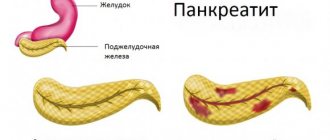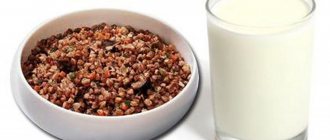How to eat small portions
Everything is extremely simple: the total volume of food is divided into 5 - 10 parts, while both the intervals between meals and the portion sizes are reduced. Depending on the circumstances, you can switch to 5-6 meals a day, while for each meal you will need to eat a portion of no more than the palm of your hand, or give preference to 8-10 meals a day with food volumes of no more than two-thirds of a glass. Which path to choose is up to everyone to decide for themselves. The main thing is that the intervals between meals do not exceed 4.5 hours with the first food option and 2 - 2.5 hours with the second (of course, not counting a full night's rest). Of course, not everyone is able to organize 7-8 snacks, even an apple or a glass of kefir, during a busy working day, in which case it is better to choose the first option and stick to it both on weekdays and on weekends.
Why is this useful?
Eating in small portions for weight loss, or split meals, is not only a way to lose weight, but also an excellent health measure that helps cleanse the body, normalize the gastrointestinal tract, regulate the production of digestive enzymes and general metabolism. An important plus is that with this diet you practically don’t feel hungry, which means the likelihood of a breakdown is reduced. It is important that it is impossible to reduce weight excessively. Once the extra pounds are exhausted, your body weight will become constant.
Fractional meals for weight loss: reviews and results
Close
- Diseases Infectious and parasitic diseases
- Neoplasms
- Diseases of the blood and blood-forming organs
- Endocrine system diseases
- Mental disorders
- Nervous system diseases
- Eye diseases
- Ear diseases
- Diseases of the circulatory system
- Respiratory diseases
- Digestive diseases
- Skin diseases
- Diseases of the musculoskeletal system
- Diseases of the genitourinary system
- Pregnancy and childbirth
- Diseases of the fetus and newborn
- Congenital anomalies (developmental defects)
- Injuries and poisoning
- Circulatory and respiratory systems
- Weight loss
- Vegetables
- Detox diets
- Fruit
- Fashionable
- For men
- Weight gain
- Vegetarianism
- National
- Antibiotics
ACTIVE SUBSTANCES
- Allergology
- [A] Abasia .. Acidosis
The benefits of fractional meals
The fractional nutrition system is physiologically determined. The mucous membrane of an empty stomach produces a special hormone - ghrelin, which causes the feeling of hunger, which gradually increases as the hormone accumulates. If the intervals between meals are shortened, the stomach becomes busy almost all the time, and ghrelin simply does not have time to accumulate in sufficient quantities to signal hunger. In addition, the volume of the stomach plays a huge role in the feeling of fullness. This is an elastic muscular organ, it stretches when you overeat, and when you switch to small portions of food, on the contrary, it gradually contracts, thanks to which you can get enough of even a glass of kefir or two or three spoons of salad. Gradually, gastric juice and digestive enzymes respond to small volumes of food: now they are produced in smaller volumes, since much food does not enter the stomach. There are no sudden increases in blood sugar levels - therefore, the pancreas does not have to suddenly release large portions of insulin. Gentle regulation of metabolism is the main goal of the fractional nutrition system, thanks to which you can reduce your weight by 1-1.5 kg per week. If fractional meals become a habit, these kilograms will not return!
Is split meals useful when dieting? Reviews of those losing weight
Fractional meals have long been known among professional nutritionists. It is according to this pattern that athletes eat when preparing for competitions. This helps them quickly regain their shape and not feel hungry.
Fractional meals
Photo: Shutterstock
What is fractional nutrition
Fractional nutrition is not a diet, but a change in the number of meals per day. To lose weight, you need to eat small meals every three to four hours. Fractional nutrition is based on the simple principle of reducing the amount of food consumed. The body does not have time to feel the feeling of hunger, which most often occurs five to six hours after breakfast, lunch or dinner. Having received a few calories, he absorbs them without “asking for more.” This system allows you to quickly lose excess weight. You can lose from 1 to 5 kilograms per week, depending on your initial weight. The larger it is, the faster the weight loss will be in the first months.
ACCORDING TO THE REVIEWS OF LOSSING WEIGHT, THE TRANSITION TO FRACTIONAL NUTRITION IS ACCEPTED BY THE BODY REALLY EASILY. NO Dizziness OR CONSTANT DESIRE TO SNACK. AT THIS WEIGHT IS LOSSED QUICKLY EVEN WITHOUT SPORTS EXERCISES
Fractional meals. Sample menu
The fractional meal menu is quite extensive; almost all products are allowed. But at the same time, the serving size is reduced by half from the usual one.
Breakfast is quite hearty: oatmeal porridge, cereal, vegetable salad, baked fish, brown rice, buckwheat - your choice. Serving size – no more than 200 grams. Snack (two to three hours after breakfast) – apple, yogurt, cottage cheese, banana, no more than 100 grams. Lunch is the same as for breakfast, but you can add a piece of chicken breast and grain bread to the salad or cereal. A serving is no more than 200 grams. Snack – the same foods as after breakfast. Dinner - boiled or baked fish, chicken, vegetable salad, stewed zucchini and eggplant, vinaigrette (200 grams). Snack after dinner - a little cottage cheese or a glass of kefir.
THE NUMBER OF MEALS DEPENDS ON HOW MUCH A PERSON IS SLEEPING AND HOW MUCH IS AWAKE. IF HE GETS UP AT SEVEN IN THE AM AND GOES TO BED AT TWELVE, THEN THERE SHOULD BE SIX TO SEVEN SNACKS PER DAY
This complete menu allows you to replenish the body's needs for minerals and provides the amount of calories necessary for an active, productive life and sports. Its huge advantage is that carbohydrates in food are kept to a minimum, but the body does not feel this, since it receives new portions quite often and simply does not have time to feel the absence of carbohydrates. To replenish their quantity, the body uses up fat reserves without signaling hunger, since the stomach is constantly full.
Source
What you can and cannot eat
Doctors and scientists have not yet agreed on this issue. Some are convinced that it is necessary to exclude any indulgences and strictly switch to healthy foods. That is, forget once and for all not only about fast food and soda, but also about sugar in coffee, chocolate, and nuts. Other experts believe that periodically pampering yourself with tasty things is not only not harmful, but even beneficial - the main thing is not to violate the frequency of meals, portion sizes and still give preference to more “healthy” delicacies, for example, dark chocolate or nuts. Most likely, those who are burdened with significant excess weight are still better off following the first option - at least for the period until the bulk of the extra pounds is gone. Breakfast is the first meal after a long night break. The body naturally asks for food, and the portion should be nutritious and at the same time light, because the enzymes have not yet “woke up”. The ideal start to the day is whole grain porridge, which can be supplemented with nuts, dried fruits, and honey. Lunch or dinner must contain a first course and protein: meat or fish with a side dish of vegetables. But you should refrain from potatoes rich in starch, especially fried ones. You need to have dinner 3 hours before bedtime: a small portion of food will be safely digested during this time. And if you have a persistent feeling of hunger before going to bed, you should drink half a glass of kefir. Snacking on sandwiches and especially fast food is unacceptable. You can take apples, kefir, whole grain bread, muesli, cottage cheese with dried fruits with you to work.
And now about the results
Ideally, you can lose 4 kg in 5 days, but it all depends on how your body reacts to the new diet. To determine effectiveness, let's pay attention to the reviews:
“The fractional method has become my diet for 5 years now. This does not mean that I don’t eat anything, I just adhere to all the rules during the regime and repeat it every 2 months. After the first cycle, which the nutritionist planned for a week, I managed to overcome 6.5 kg. Now the goal of my diet is no longer excess weight, but cleansing the body, because after the regime I feel a surge of energy. Very pleased. Olga"

“When I got a new job, I simply had no time to eat, I had a festive dinner every day, and as a result, I gained almost 10 kg in a month. I decided to try a fractional menu, taking apples, yoghurts, etc. for a snack. In five days, 3 kg disappeared, and 10, so to speak, 2 more. I repeated the course a month later, regained my former shape, which has lasted for 2 years. I advise everyone to try this diet without compromising their health. Oleg"
What is important to remember
The transition to eating small portions may not be easy, especially at first, while the stomach is still stretched by the usual large meals. It is important not to give up and endure the first time. In addition, you can use psychological tricks. First of all, buy yourself new dishes: a small plate, a tureen, a cup, a spoon. Psychologists from Bond University, Australia, have proven that the body perceives a portion of food in relation to the size of the dish on which it lies. It’s almost impossible to get enough of a standard chop lying lonely on a large platter surrounded by a couple of drops of sauce and a handful of arugula. But the same chop, which completely occupies a small plate, is perceived by the body as a large portion and satiety comes from it immediately. Another useful trick is to chew your food slowly. This is good for digestion, and, in addition, the signal of satiety comes before the meal is over, and this is the best prevention of overeating. Scientists at the University of Connecticut believe that a diet of small portions is ineffective in only one case: in the treatment of obesity in adolescents. The reasons for this are that adolescents lack sufficient discipline to control the amount of food they eat. However, it doesn’t hurt to try to teach your teenager a healthy diet. Just as it wouldn’t hurt to adhere to it for every person who cares about their own health.











